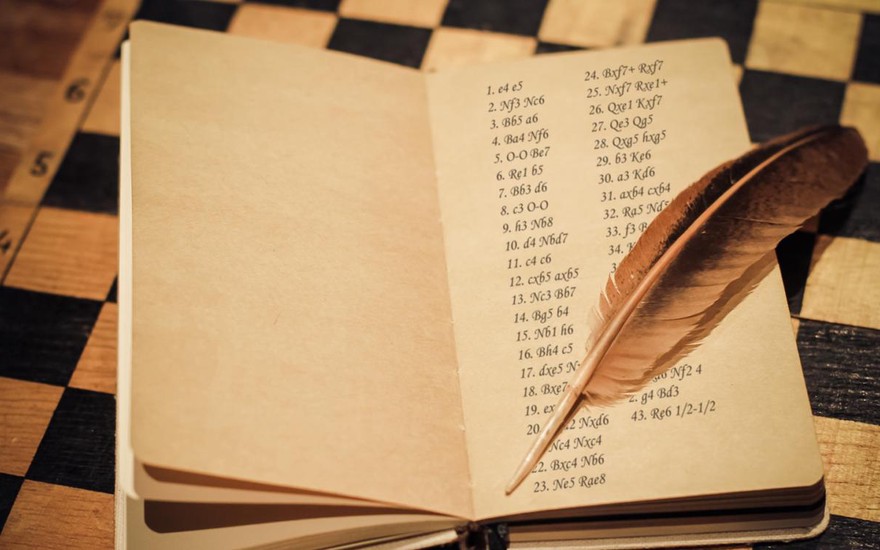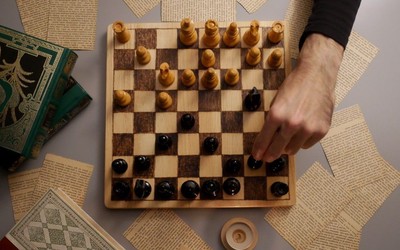
Creating an Opening Repertoire Using a Lichess Study
This blog is dedicated to helping players create a study that they can use to create or improve their opening repertoire. You might even want to give yours a name...If you would prefer to read this in an actual study, it's below:
Introduction
Whatever skill level you have, a new and improved opening repertoire can be created. For me, it's always been one of the most fun things about learning chess. It allows you to feel organized and prepared, finding solutions to the openings that have always caused you the most grief. If you have seen my guide to chess personalities, or have a chess idol, opening choices will be easier to make.
One of the best ways to find out the openings of your favourite players (or your rivals) is to use this website: www.openingtree.com Select: Notable Chess Players > Select a Player > Select Relevant Colour > Search. The rest is pretty self-explanatory.

The general rule is, the more popular the move is (at the master level), the better it is. The pro to finding/choosing less popular moves, is that less people will know the lines, however the con is that they're probably not as good the better you get. If you haven't already, turn on Stockfish using the toggle to the top right of the annotation box.

Press the toggle button to the right.

For instance, after 1.d4 d5, 2.c4 'The Queen's Gambit' is by far the most popular move. And it's agreed to be the best move at the top level. 2.e4? 'The Blackmar Gambit' Is a much less popular move because it's not as good. But if you learn the theory, it's probably playable, and there are still 300ish games in the Master's Opening Book Database.
As White
After you create a study (which you can do by hovering over "Learn" at the top of the page, clicking the "study" button, then clicking the Green + at the top right), I would name the first chapter "White Summary".
Note: It might be worth selecting "Unlisted" under the "Visibility" section if you're a tournament player.

The first choice is your first move (usually 1.e4 or 1.d4). I would strongly advise to stick with just one move. Good first moves involve: e4, d4, Nf3, c4, g3, b3, f4, Nc3 and b4.There will be positions were there are many possible moves, and even if Stockfish doesn't like it, if you learn the moves, most are playable even to a high level. But take that advice with a grain of salt (-3 will lose, for example).
Let's say we choose 1.e4, I would like for you to open the "Opening Book" using the book symbol on the bottom left of this annotation box. You'll see a settings cog in the top left once you open it, here you edit the search. The most common response we see, to 1.e4 is 1...c5: The Sicilian Defense.


The little cog bottom in the top right of the opening book will help you change your parameters.
But, we must also prepare for:
1...e5 The 2nd most popular move.
1...e6 The French defence.
1...c6 The Caro-Kann.
1...d5 The Scandinavian.
1...Nf6 Alekhine's defence.
1...d6 The Pirc.
1...b6 Owen defence, etc.
Let's assume they chose the most popular move.
We decide our next move will be, let's say, 2.Nf3, the 'Open Sicilian', this is the most common response, however, depending on your style, there are plenty of options to choose from, including:
2.Nc3 The Closed Sicilian.
2.c3 The Alapin.
2.d4 The Smith-Morra gambit.
2.a3!? The Mengarini
2.b3 The Snyder, etc.
2...d6 Is the most principled and popular response to 2.Nf3 .Our crossroads will have less and less options as we continue on. But on move 2, they're still vast, also possible which we must plan for (if you have decided to choose Nf3, for example), is:
2...Nc6 The old mainline.
2...e6 The French variation.
2...g6 The hyper-accelerated dragon.
2...a6 The O'Kelly.
2...Nf6 The Nimzowitsch, etc.
Let's assume we play the best move; 3.d4...
We continue this process for as long as you want, but I recommend only going to around move 10-15 to start with, and with each variation, add the first 3-4 moves you want to play. From move 5 onwards, there will be an overwhelming popularity on a certain move, meaning the lines won't divert too much.
As Black
There's pros and cons to making opening choices as Black. The pro, is that you have the ability to just play 1 opening to everything (for example, if you choose to play the Caro-Kann or King's Indian Defence). But the con, is that in most cases, if you want to play with more variety, you will have to prepare for the popular 1st moves. 1.e4 Is the most popular 1st move, but, as I said before, unless you're planning on playing uncompromising openings, you'll also have to prepare for:
1.d4 The 2nd most popular move.
1.Nf3 The Reti.
1.c4 The English.
1.g3 The Hungarian/KIA.
1.f4 The Bird.
1.Nc3 The Van Geet.
1.b4 The Polish, etc.
Now we will repeat the process just as we did with the "White Summary" chapter, except this chapter will be called "Black Summary".
Uncompromising Openings
Let's say that you decide to play the London System. You will almost always play 1.d4 2.Nf3 3.Bf4 4.e3 5.c3 6.Nbd2 7.O-O or Qc2 and O-O-O. But, you will still have lots of work to become proficient in that opening. True, it will be less theory to last you to move 10, but you will still eventually need to learn it inside out, which takes a lot of effort if it's as uncompromising as it appears.
1.d4 Nf6... How does a London player face:
1...e5? Where the best move is to leave the London System: 2.dxe5
1...c5 Where the best move is to leave the London System: 2.d5
1...Nc6?! 2.Nf3 Is best, luckily.
1...f5 2.Nf3 Is one of the best.
1...c6 2.Nf3 Is one of the best.
Repeat the process.
Conclusion
I strongly recommend that you don't put too much time into these lines, and rather just play with the blueprint. That way you will never be surprised in the first 4-5 moves. From there, as soon as you get surprised, note it down, and after the game you can study that particular line. The best time control to practice openings in my opinion is 5+3, or 10+0.
More blog posts by TheLastStyleBender

The Opening Guide
In an earlier blog (The Opening Anthology), I wrote a guide which read like a CYOA . However, admitt…
The Opening Anthology
You may already have an opening repertoire - but let me ask you, are those openings really the right…
Deriving a Chess Style from your Learning Style
This test was designed for anyone to quickly determine which openings best suit them based off of th…
